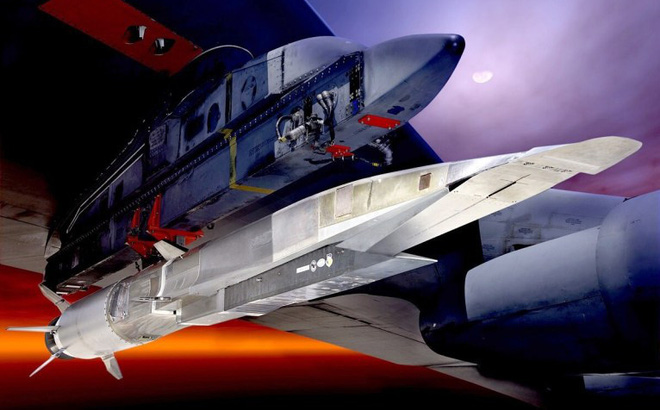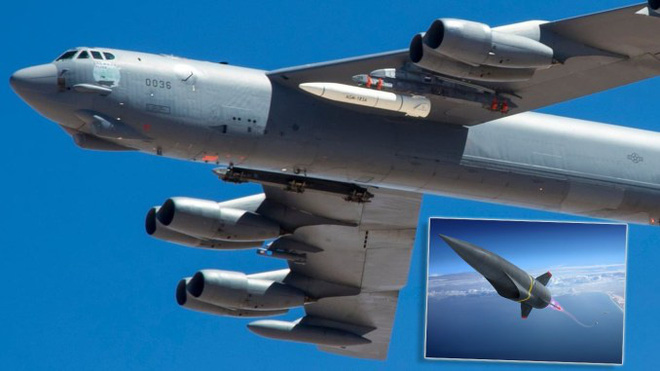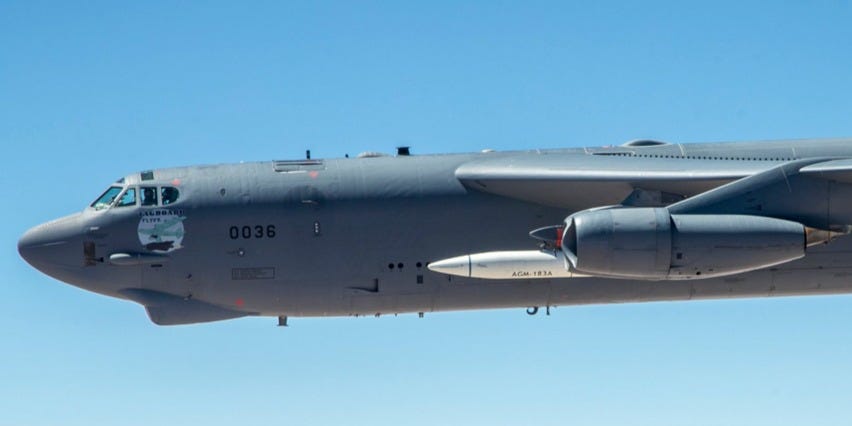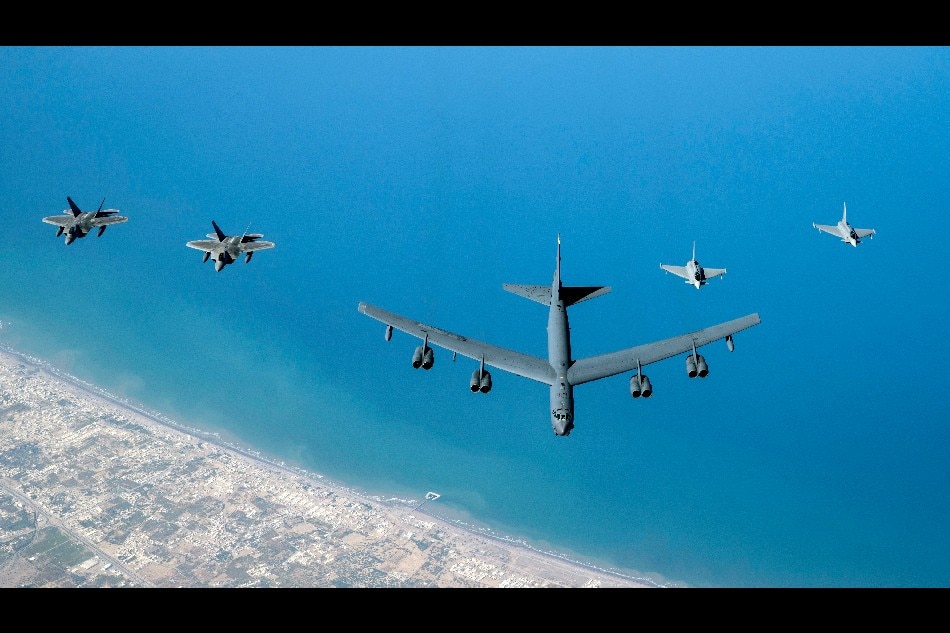After being launched from the aircraft, the boosters will continue to accelerate before releasing the warhead, flying at beyond the speed of sound to self-attack the target at speeds up to Mach 20.

A graphic image of a supersonic weapon called the X-51A Waverider fitted under the B-52 wing. Photo: U.S. Air Force
Aviation Week on June 9, 2020 published an article by reporters Guy Norris and Steve Trimble said, a scramjet-powered missile, developed jointly by the US Defense Advanced Research Projects Agency (DARPA) and the U.S. Air Force Hypersonic Air-breathing Weapon Concept (HAWC) program was destroyed in a recent test accident.
During a test flight, a missile allegedly inadvertently detached from the B-52 strategic bomber. The cause of the incident is believed to be related to an aircraft belonging to 419th Flight Test Squadron at Edwards Air Force Base, California. The accident is under investigation.
In related information earlier, in May 2019, NavalNews.com reported that Lockheed Martin’s Key Research Department Skunk Works was developing this type of missile for DARPA.

B-52 carried an air launched rapid response weapon (ARRW) AGM-183A from the Edwards Air Force Base
Lockheed Martin did not disclose many details, but a representative of the defense industry group explained that the new missile line was built based on the experience gained from previous supersonic projects such as HTV- 2 (Hypersonic Technology Vehicle 2).
The US hypersonic weapons program has been of particular interest recently because both Russia and China have claimed to have made significant progress on this weapon over the past five years.

Moscow says its Kh-47M2 Kinzhal (“Dagger”) supersonic missile has been in service since December 2017. The MiG-31, the Kh-47M2 launcher vehicle, has also been reported by the Western press.
The supersonic weapons attract attention because they have the ability to attack targets on a global scale in a very short time that no other country has ever achieved before. It is even faster than intercontinental ballistic missile (ICBM) systems.
A report on NavalNews.com in May 2019 revealed that HTV-2 tested in DARPA’s Falcon Project was capable of flying at Mach 17.53, equivalent to 21,000 km/h.

In addition to the scramjet-powered missile in the framework of the HAWC program, the US Air Force is also testing a supersonic launch system called AGM-183A ARRW (air launched rapid response weapon) developed by Lockheed Martin.
This weapon includes a rocket and a warhead with supersonic speed. After being launched from the aircraft, the boosters will continue to accelerate before releasing the warhead, flying at beyond the speed of sound to self-attack the target at speeds up to Mach 20.
Soucre: military-wiki.com





